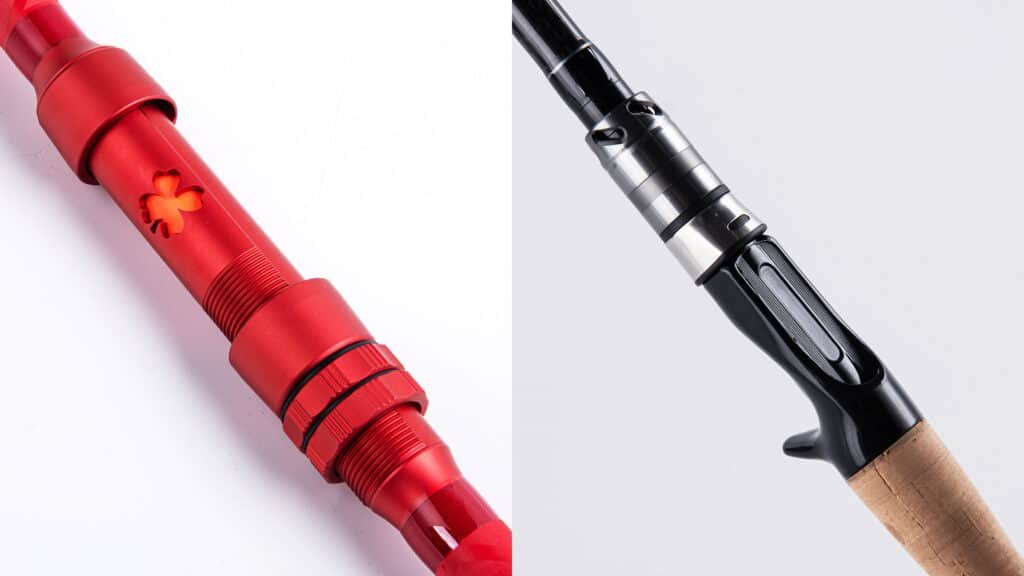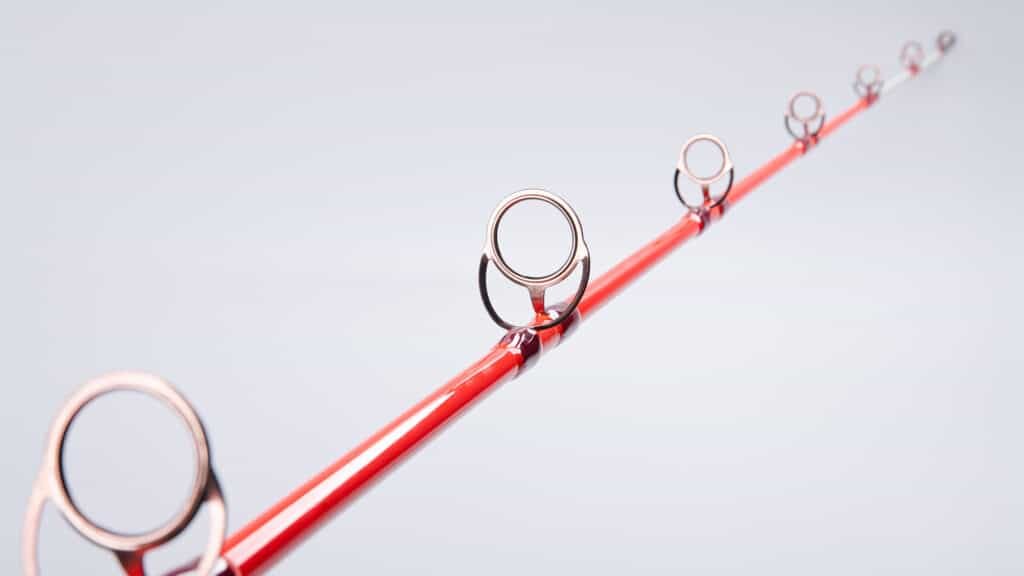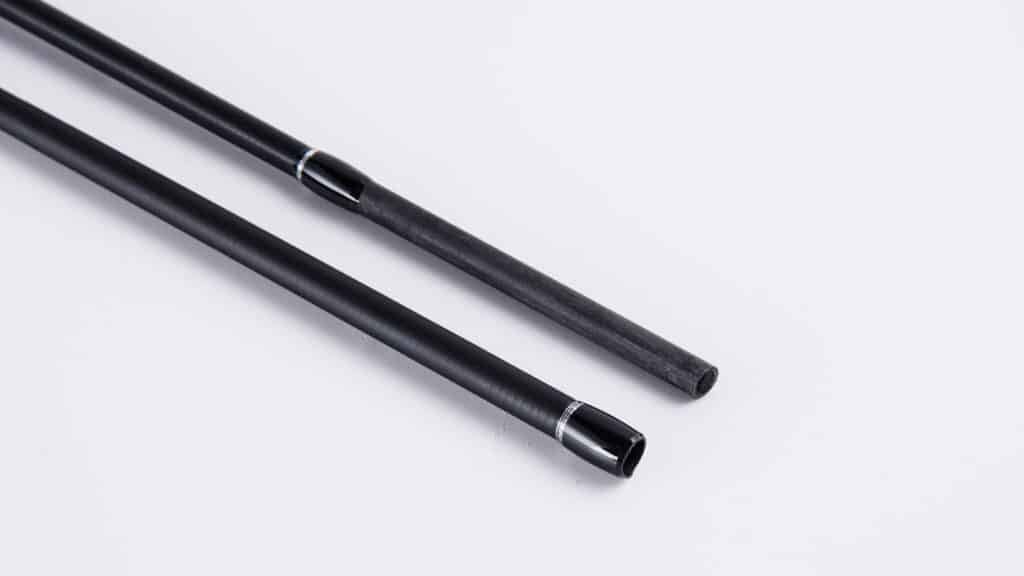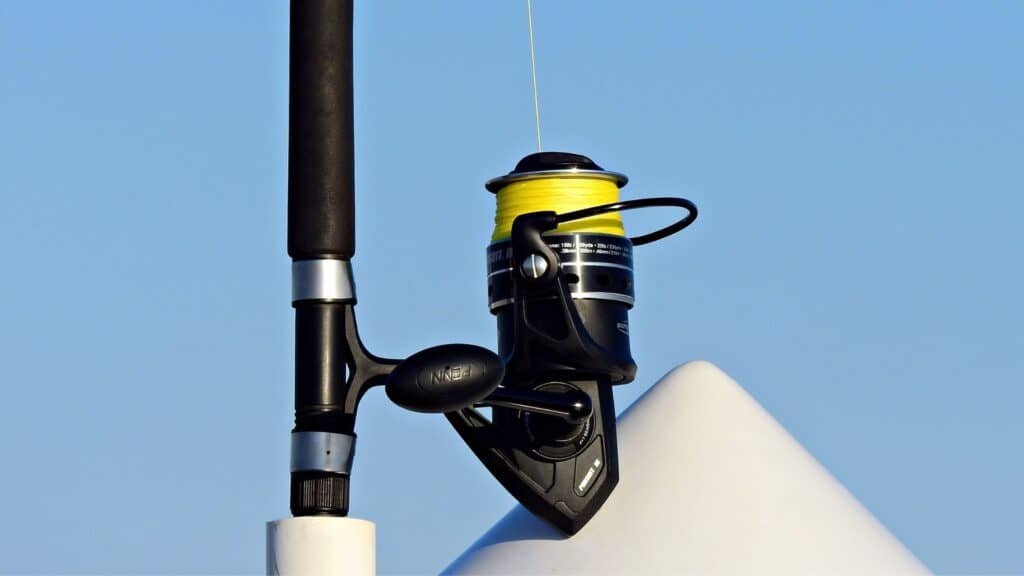
Introduction
For anyone embarking on their fishing journey, the excitement and anticipation of reeling in that first catch are often mixed with the confusion of navigating through various fishing gear. The fishing rod, the angler’s primary tool, can be particularly perplexing to choose. But fret not, because getting it right is much simpler than it seems, and the payoff is enormous.
Choosing the right fishing rod is crucial, especially for beginners. It can make the difference between a frustrating first experience and a rewarding introduction to the sport. A suitable rod matches your style of fishing, is comfortable to handle, and is appropriately designed for your target fish. It significantly enhances your chances of success and enjoyment out on the water.
In this blog post, we will simplify this process for you. We start by breaking down a fishing rod into its basic components, helping you understand the role each part plays. Next, we delve into the different types of fishing rods and guide you on finding the right fit based on your fishing goals and environment. We then move onto the key factors to consider when choosing your first fishing rod, including length, power, action, material, and cost.
To further assist your decision, we provide a curated list of beginner-friendly fishing rods, explaining why each one could be a great choice for newcomers. Lastly, we share some essential maintenance tips to ensure your chosen rod lasts you a good long while, giving you the best bang for your buck.
By the end of this guide, you will be equipped with the knowledge you need to confidently select your first fishing rod, setting you up for a successful and enjoyable start to your angling adventures. Let’s get started!

How to Choose Fishing Rod For Beginners?
When choosing a fishing rod for beginners, consider a versatile and easy-to-use spinning rod. Look for one that fits your budget, feels comfortable in your hand, and is suited to the type of fishing you plan to do. Proper care and maintenance will ensure its longevity and enhance your overall fishing experience.
Fishing Rod Basics: Understanding the Parts
Before diving into how to choose a rod, it’s important to understand the basic parts that make up a fishing rod. Each part has a specific function and plays a role in the overall performance of the rod.
Handle (or Grip): The handle, also known as the grip, is the part of the rod you hold onto. It’s typically made from cork or EVA foam for comfort and a secure grip. The length and style of the handle can vary depending on the type of rod and its intended use. Longer handles are ideal for casting long distances, allowing you to use two hands, while shorter handles are perfect for single-hand casting and more precise, shorter casts.

Reel Seat: Located above the handle, the reel seat is where the fishing reel is attached to the rod. Reel seats are designed to securely hold the reel in place and provide a sturdy base for the reel to operate. The design of the reel seat contributes to the balance of the rod when it is fully rigged.

Guides: These are the loops that run up along the length of the rod and through which the fishing line is threaded. Guides help distribute the stress along the rod when you cast or reel in a fish, preventing the rod from snapping. The size, number, and material of the guides can influence the casting distance and accuracy.

Blank (or Rod): The blank is the main part of the rod. It’s usually made from graphite, fiberglass, or a composite of both. The blank determines much of the rod’s performance characteristics, including its power (the rod’s resistance to bending) and action (the speed at which the rod returns to its neutral position).

By understanding these parts and their functions, you can better appreciate the design and construction of different rods, helping you make an informed decision when choosing a rod that suits your needs. In the next section, we’ll explore the different types of fishing rods and their typical uses.
Types of Fishing Rods: Finding the Right Fit
Fishing rods come in a variety of styles, each designed for specific fishing techniques and environments. As a beginner, it’s essential to know the differences between them and choose a rod that fits your intended fishing style. Let’s take a look at the most common types of fishing rods and their typical uses.
- Spinning Rods: These are popular among beginners due to their ease of use and versatility. Spinning rods are designed to be used with spinning reels, which are mounted underneath the rod. They are ideal for casting lighter lures and bait, making them perfect for targeting smaller fish species. Spinning rods have a moderate to fast action, providing good casting distance and sensitivity.
- Casting Rods: Casting rods, also known as baitcasting rods, are designed for use with baitcasting reels, which are mounted on top of the rod. These rods are ideal for casting heavier lures and targeting larger fish species. They offer greater accuracy and control compared to spinning rods but can be more challenging to master for beginners due to the potential for backlash (line tangles) when casting.
- Fly Rods: Fly rods are designed specifically for fly fishing, a technique where the angler casts an artificial fly using a special type of line. Fly rods are typically lightweight and have a slower action compared to other rods. They require a unique casting technique and are used to target a variety of fish species, including trout, salmon, and bass.
- Surf Rods: These rods are designed for surf fishing, which involves casting from the shoreline into the surf or ocean. Surf rods are typically longer and more robust than other types of rods, allowing for long-distance casting and handling larger fish species. They are designed to be used with either spinning or casting reels, depending on the angler’s preference.
- Telescopic Rods: Telescopic rods are designed for portability, with sections that collapse into each other for easy transport and storage. They can be used for various fishing techniques but are particularly popular among travelers and backpackers who need a compact rod.
- Ice Fishing Rods: As the name suggests, ice fishing rods are designed for use in ice fishing, a technique where anglers fish through holes drilled in the ice. These rods are usually shorter and more robust than other types of rods, with a slower action to accommodate the unique conditions and challenges of ice fishing.

As a beginner, it’s essential to choose a rod that matches the type of fishing you plan to do most often. Spinning rods are often recommended for newcomers due to their ease of use and versatility, but the ultimate choice should be based on your personal preferences, target fish species, and fishing environment. In the next section, we’ll discuss the key factors to consider when selecting your first fishing rod.
Key Factors in Choosing Your First Fishing Rod
Selecting the right fishing rod involves more than just picking a type that fits your intended fishing style. There are several key factors you need to consider to ensure you choose a rod that suits your specific needs and enhances your fishing experience. Here are the most crucial factors to keep in mind:
- Length: The length of the rod affects your casting distance and control. Longer rods can cast further, making them suitable for surf and offshore fishing, or any situation where longer casts are necessary. Shorter rods offer more control and accuracy, ideal for close-quarter fishing or targeting specific spots in the water.
- Power: Also known as rod weight, power refers to the rod’s resistance to bending or its “backbone”. Rod power ranges from ultra-light to heavy. Ultra-light rods are suitable for catching small species as they bend more, improving sensitivity. On the other hand, heavy rods are designed for big game fishing, where strength is more crucial than sensitivity.
- Action: Action refers to where and how much a rod bends when pressure is applied, as well as how quickly it returns to its neutral position. Fast action rods bend near the tip, offering more power but less sensitivity, suitable for large, strong fish. Slow action rods bend near the base, offering more sensitivity but less power, ideal for small to medium-sized fish.
- Material: The two most common materials used in rod construction are fiberglass and graphite. Fiberglass rods are durable and require little maintenance, making them suitable for beginners. However, they’re less sensitive than graphite rods. Graphite rods are more sensitive and allow you to feel bites better, but they’re also more brittle and require careful handling.
- Cost: For beginners, there’s no need to break the bank on your first fishing rod. Many affordable rods are well-made and perfect for learning. However, as with most things, you get what you pay for. If you plan on fishing regularly, investing in a slightly more expensive rod could pay off in the long run due to better construction, materials, and overall performance.

Remember, the perfect fishing rod for you is the one that fits your style of fishing, feels comfortable in your hand, and falls within your budget. The next section will help you further by providing specific recommendations of beginner-friendly fishing rods.
Recommended Beginner-Friendly Fishing Rods
While there’s no one-size-fits-all when it comes to fishing rods, there are certain models that stand out for their ease of use, durability, and value for money, making them ideal for beginners. Here are our top picks:
- Ugly Stik GX2 Spinning Rod: This rod is known for its balance of sensitivity and durability. Its unique construction combines graphite and fiberglass, making it strong yet lightweight. It’s also very affordable, making it a popular choice for beginners.
- Shimano Solara Spinning Rod: Shimano is a trusted name in fishing gear, and the Solara lives up to the brand’s reputation. It’s a medium power rod, making it versatile for different types of fishing. It offers a great combination of durability, sensitivity, and affordability.
- Okuma Celilo Ultralight Trout Rods: These rods are perfect for beginners who plan to start with smaller fish like trout. They’re ultralight with great sensitivity, allowing you to detect even the slightest bites.
- PLUSINNO Fishing Rod and Reel Combos: PLUSINNO offers a combo set that includes both a rod and a reel, ideal for beginners who are starting from scratch. The rod is telescopic, making it portable and easy to store.
- Penn Battle II Spinning Rod and Reel Combo: Another combo option, this set from Penn, is slightly more expensive but offers excellent value for its price. The rod is durable and responsive, and it comes with a high-quality spinning reel that’s already spooled with line.
Remember, the best rod for you will depend on your personal preferences and the type of fishing you plan to do. The rods above offer a good starting point for your search. In the next section, we’ll share some maintenance tips to ensure your chosen rod lasts for many fishing trips to come.
Caring for Your First Fishing Rod: Maintenance Tips
Once you’ve chosen your first fishing rod, it’s essential to take care of it to ensure it lasts for many fishing trips to come. Proper maintenance can extend the life of your rod, enhance its performance, and save you money in the long run. Here are some simple maintenance tips for your fishing rod:
- Clean Regularly: After each fishing trip, especially if you’ve been fishing in saltwater, clean your rod with fresh water. Salt can cause corrosion over time, while dirt and sand can damage the rod’s components. A gentle rinse with warm soapy water followed by a thorough rinse with fresh water will do the trick.
- Dry Properly: After cleaning, always let your rod dry completely before storing it. Storing a damp rod can lead to mold and mildew, which can damage the rod over time. To dry your rod, simply lean it vertically in a safe place and let it air dry.
- Inspect Frequently: Regularly check your rod for any signs of damage such as cracks, chips, or loose fittings. Pay particular attention to the guides. Make sure they’re secure and free from cracks or rough edges that could damage your line.
- Store Correctly: When not in use, store your rod in a dry, cool place, away from direct sunlight. Use a rod rack or a similar storage solution that keeps the rod off the ground and in a horizontal or vertical position. This will help prevent bending or warping.
- Transport With Care: When transporting your rod, use a rod tube or case to protect it from damage. This is particularly important for multi-piece rods or delicate rods like fly rods.
Remember, a well-maintained rod not only performs better but also provides a more enjoyable fishing experience. In the next section, we’ll wrap things up with some final thoughts on choosing your first fishing rod.

Conclusion
Choosing your first fishing rod is an exciting step in your angling journey. By understanding the basics of fishing rod parts, the different types of rods available, and key factors to consider, you can make an informed decision that best suits your specific needs and preferences.
Remember, there’s no one-size-fits-all rod. What works for one person might not work for another. The key is to find a rod that feels comfortable in your hand, fits your style of fishing, and falls within your budget.
Our recommended beginner-friendly rods provide a good starting point, but don’t be afraid to try different rods until you find the one that feels right. As you gain more experience and confidence, you may find yourself adding different types of rods to your collection to suit various fishing conditions and techniques.
Lastly, don’t forget to take care of your rod. Regular cleaning, proper storage, and careful transportation can go a long way in extending the life of your rod.
Remember, fishing is not just about catching fish. It’s about enjoying the experience and connecting with nature. With the right rod in your hand and a bit of patience, you’re well on your way to creating memorable fishing adventures. Good Luck!

